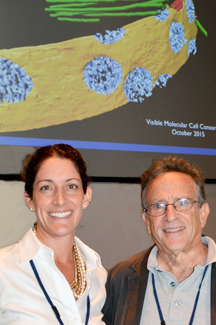Of Note
TSRI Receives More than 1,000 Online Contributions in FY2015
For the first time, The Scripps Research Institute (TSRI) has received more than 1,000 online gifts in a year. From October 1, 2014 to September 30, 2015, TSRI received 1,189 online gifts through its philanthropy website, a 34-percent increase over the previous year.
“We are grateful to the many generous donors who support The Scripps Research Institute’s mission to improve human health by tackling the toughest challenges,” said Chris Lee, director of philanthropy. “Online and social media enable us to reach a different set of donors than tradition philanthropy and help us to build a broad base of support for TSRI scientists’ critical work.”
The gifts totaled $162,849, a one-percent increase over the previous year. In addition to organic website traffic and searches, giving was spurred by electronic newsletters and appeals, search-engine marketing, lightboxes and social media.
Not included in these figures are two crowdfunding campaigns. Professor Erica Ollmann Saphire’s online drive for Ebola research brought in 845 gifts and $107,211 (plus an additional $100,000 family foundation gift). Best-selling novelist Tess Gerritsen’s “War on Alzheimer’s”—which launched in July and ends in November—brought in 72 gifts and $5,272 during FY2015; Gerritsen will match up to $25,000.
To learn more about giving to TSRI, see the institute’s philanthropy website http://www.scripps.edu/philanthropy/index.html or go directly to the donation page.
Send comments to: mikaono[at]scripps.edu














